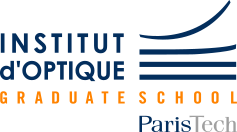MS22Optical Design for Lighting Systems
Level: Advanced
Audience:
Senior technicians or engineers wishing to design illumination systems.
Prerequisites:
Basic geometrical optics-Basic use of radiometry
Language of the training: English
Maximum capacity: 5
Price: 1720 € HT -
Duration: 4 days
Objectives
- Acquiring a broad knowledge of the main optical components and sub systems used in lighting and signalling
- Being able to design and optimise the photometry of a lighting system using a dedicated software.
Addressed topics
Computer-aided photometric design and Photometric optimization
- methods of photometric design outside existing softwares (introduction to the optimization of free surfaces)
- methods used in design and computer-aided optimization photometrics
Design and photometric optimization tools
- implementing design and computer-aided optimization methods in photometrics
- main lighting systems, their principles, their characteristics, advantages and disadvantages
Transversal skills
- Deepening knowledge of some light sources (LED, OLED, Laser) and optical components (SLM, micro display)
- Deepening of instrumental optics and physical optics knowledge
The program
Photometric optimization and design
- Methods of photometric design outside existing softwares
- Light sources modelization (Led, HBO lamp, laser etc)
- Optical systems modelization and photometric calculation (flux, illuminance, luminous intensity, colorimetry, polarization)
- Generating surfaces and optical components based on their geometrical and optical properties (diffusion, transmission, albedo, BRDF etc)
- Introduction to complex (free) surfaces optimization
Computer aided photometric optimization and design
- Computer aided photometric optimization and design methods
- Photometric rendering optimization
- Back lighting uniformisation
- Stray light
- Comparison of design and optimization tools
- Merit function fluctuations and noise
- Choice of a well suited optimization and design tool
Computer aided photometric optimization and design methods implementation
- Main embedded lighting systems
- Parabolic systems, elliptical, complex surfaces, Matrix Beam
Lab work
- Introduction to design and non-sequential ray tracing
- Modelization of light sources, surfaces and simple optical components
- Surface and intensity receptors (illuminance), simulation
- Non sequential ray tracing and ray properties
- Simple optical system design
- Optimization and merit function
- Advanced simulations and optimizations
- Parabolic reflector and micro-lenses matrix simulation and optimization
- Monte Carlo method and optimization
Methodology and assessment
Courses and tutorials
Lab work
Pedagogical manager(s):
- Lionel Jacubowiez - Senior teacher at Institut d'Optique
All trainings:

